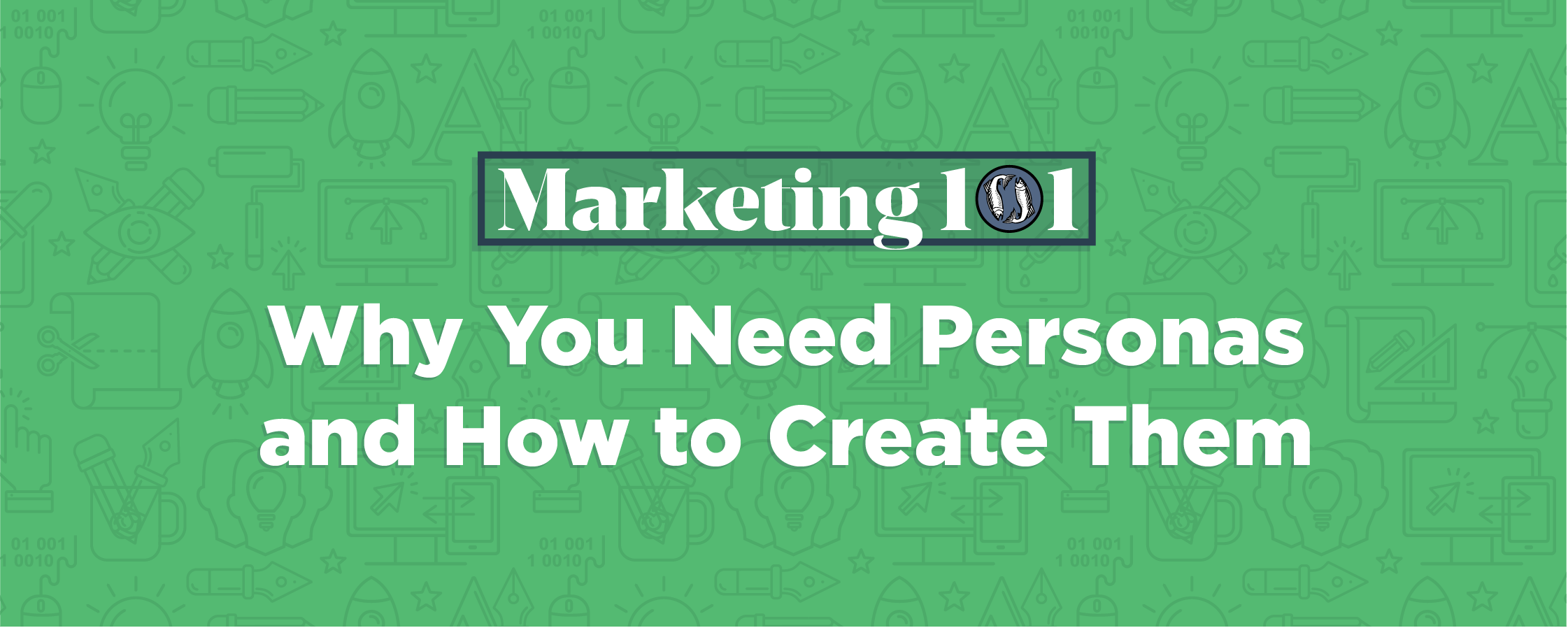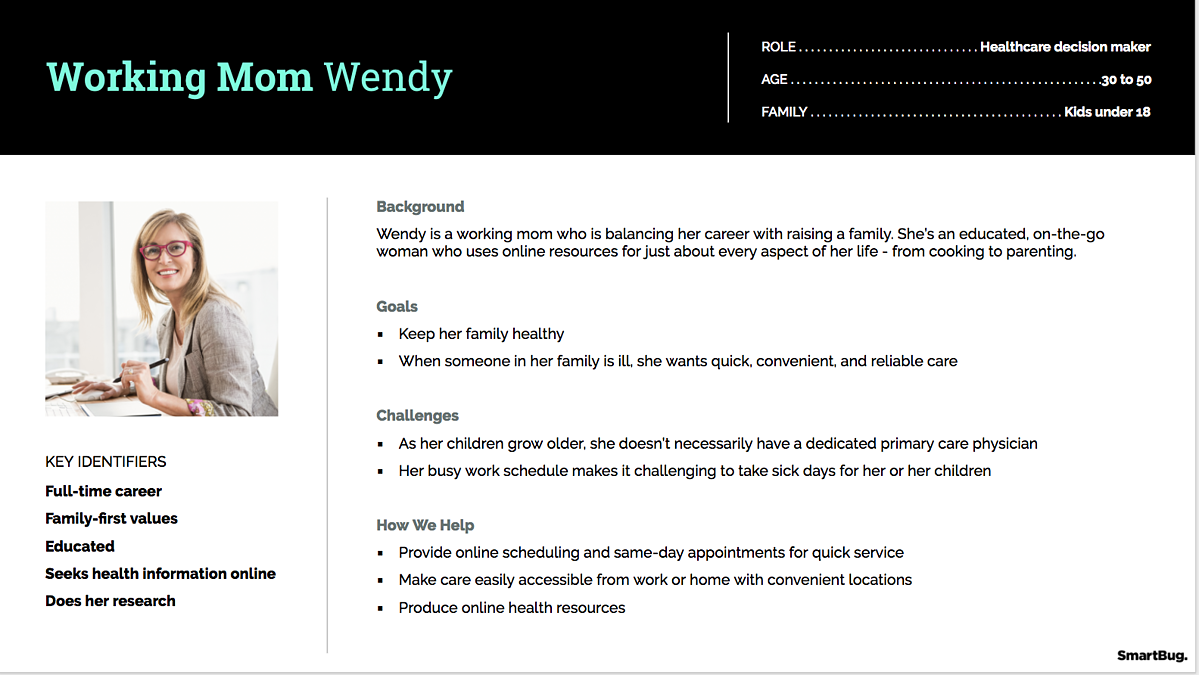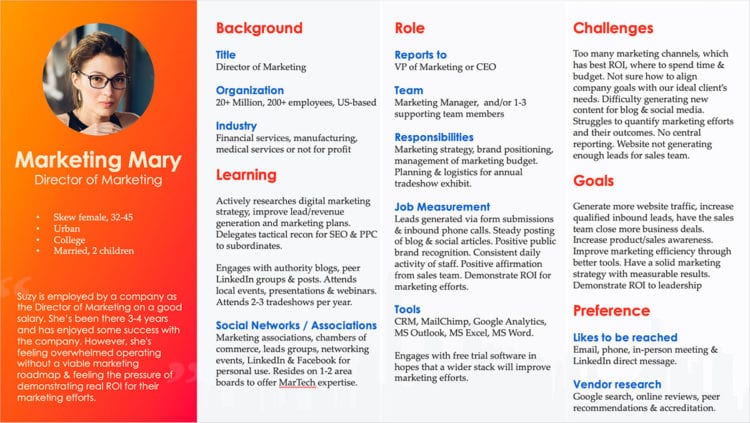- Marketing 101

The basis of good, effective marketing is knowing your audience. How else can you offer them something of value and communicate that value to them? Because you know your business and product, you already have a basic knowledge of your target audience. But if you find yourself asking questions like “How can I be sure to address my prospect’s pain points in our meeting?”, “What content should I be creating for my audience?”, and “Which targeting criteria should I be using for PPC ads?” it’s time to formalize that knowledge.
WHY YOU MUST KNOW YOUR AUDIENCE
First things first, knowing your audience helps you know what to communicate to them. What messages will resonate with them? What helpful information can you provide them to catch their attention? And then get them to stick around on your email list or social media profile? How can you convince them to take that meeting or click “purchase”? And, at a time when content truly sets companies apart, you can’t afford not to put valuable information in front of your audience members. (Check out our article “The Basics of Content Marketing & How To Get Started” for more on that.) Knowing their needs, their pain points, their questions will help you know what to write.
Knowing your audience doesn’t only help you discern which talking points or what content to provide them but also how to get it in front of them. Have you ever seen an ad for something you’re not at all interested in purchasing? For example, I frequently see Facebook ads targeting moms, even though I am not a mom (except to a cat and a bunch of succulents). The ads don’t necessarily bother me, but the people running them aren’t using their ad budget very efficiently. They’re likely using gender and age-based targeting and no or few other criteria. To target advertisements well (and thus use your ad budget efficiently), you need to know as much as you can about your customers, which of course includes demographic (gender, age, location, job) information but also psychographic information. We’ll talk through that later.
HOW TO GET TO KNOW YOUR AUDIENCE
How do you get to know your audience better? Do research, study your findings, and create customer personas.
Customer personas allow you to flesh out your understanding of your audience members and how to reach them. As SharpSpring puts it, “Buyer personas are fictionalized profiles of individual ideal customers, rooted in data from your existing successes.”
Source: https://99designs.com/blog/business/how-to-create-user-personas/
Buyer personas are not based on any one person but on generalized data about your audience. Customer persona data should be actionable. What’s the point of creating a persona if it doesn’t help with messaging, content, and targeting? Keep in mind that many businesses have several personas, one for each main segment. And some even have negative personas that show which people not to focus on. Be advised: Good personas take some work. We’ll go over how to research and create your personas in the final section.
TARGET MARKETING VS. CUSTOMER PERSONAS
Let’s make a distinction between your “target market” and your “customer personas” before we go any further.
You’re already well-acquainted with your target market, the group of people who will be most interested in your offering. Customer personas will help you dig down and isolate specifics regarding interests, motivations, and other aspects that will help you create more effective messaging and targeting. While your target market is relatively broad (focusing on general demographics and psychographics), a customer persona “zooms in” and describes your specific customer, giving further insight into their needs and buying process.
B2B VS. B2C PERSONAS
Knowing what information to include in your persona will depend on whether you are selling business-to-business or business-to-consumer.
Think about it: The buying process is different for consumers versus people making a business purchase.
What to consider for B2C targets:
- Making an individual purchase
- May be more inclined to impulse buy
- Purchases are typically more emotion-based (though logic can also play a role)
- Brand affinity matters
Source: https://www.smartbugmedia.com/blog/3-examples-of-buyer-personas-to-help-you-create-your-own
What to consider for B2B targets:
- Part of a larger group or team
- Longer purchase cycle, often needs buy-in from others
- Decisions are typically more logical, strategic, value-driven (though emotion can also play a role)
- Brand matters less than value
Source: https://www.coforge.com/blog/buyer-persona
So, a section like “Hobbies” that’s useful in a B2C persona would probably not be necessary in a B2B persona. Likewise, you don’t need sections like “Reports To” or “Team” in your B2C persona. General rule of thumb: Don’t include irrelevant data that won’t affect your messaging, content, or targeting, whether you’re B2C or B2B.
HOW TO RESEARCH & CREATE PERSONAS
Okay, so what information should you include in your persona?
Include demographic information (like age, job, education), of course, but recognize that qualitative information will be more actionable when it comes to messaging and content strategy. Focus on behavioral drivers (motivations, objectives, pain points, buying preferences), obstacles to purchasing, and mindset.
Here’s how to get the information for your personas. Use existing knowledge as well as primary and secondary research.
- Existing Knowledge
What do you and your coworkers already know about your customers? What information do you gather from leads and customers that you already have in your database? - Primary Research
Ask your actual customers for information using surveys, interviews, or focus groups. This will help you base your personas in reality, not just supposition. Craft a survey or questionnaire that’s short and to the point. (Here are some questions to consider asking.) If you think it will be difficult to get participation, offer an incentive. - Secondary Research
If you use social media or Google Analytics, you already have some general customer information at your fingertips. Head to Audience Overview in Google Analytics or Audience Insights in Facebook. You can also leverage reports from trade organizations or industry publications, if available for your industry.
There are companies (like 2 Fish Co!) that will help you perform customer persona research. This is a great idea if you have the budget for it, because they know exactly what actionable information to gather and how to gather it. Once you have all of your information, analyze it and determine patterns. Create your persona using a template or a tool like HubSpot’s “Make My Persona”. There are many persona tools out there, and most look different. Do what makes sense for your organization, adding and subtracting based on your persona needs. Here at 2 Fish Company, we use the persona tool in our marketing automation platform, SharpSpring, to help drive our engagements with our clients and prospects. Go as in-depth as you think is necessary. Maybe your persona includes actual quotes from your customer interviews or common objections your sales team members hear. Maybe it goes as far as to have messaging stubs. Above all, remember that every piece of your persona should be useful for messaging, content, or targeting.
CONCLUSION
Once you have your completed personas, turn to them when you need content or targeting ideas, or when you need to teach a new team member about your audience, or even when you just need a refresh on your prospect’s pain points before a big meeting.
You may find that you need to add or remove sections from your personas as time goes on. That’s okay! Think of them as living documents. If you have further questions about personas or how to create them, we’re here to help.
Be sure to check out more Marketing 101 content and subscribe to be notified right away when new content is released!
Remember, you can always submit questions for us to cover!
SHARE IT!
-
Marketing 101
Marketing 101: How to Make Social Marketing Work for You
-
Marketing 101
Marketing 101: What You Need to Know About Search Marketing







